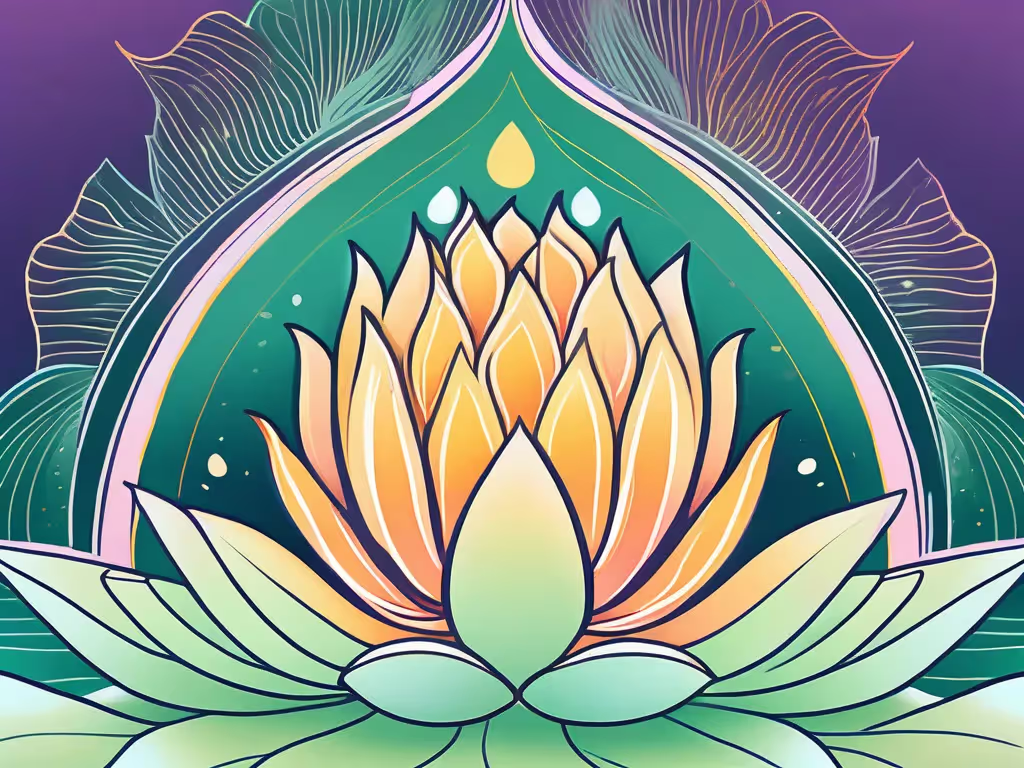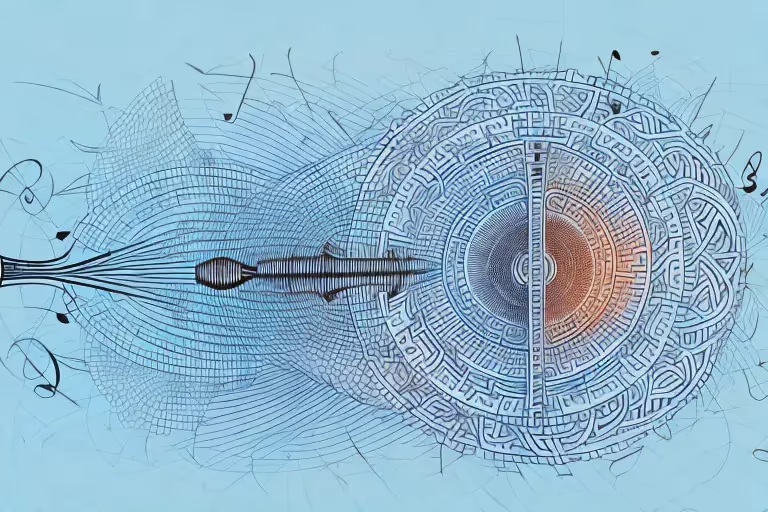Mahamudra, a term derived from Sanskrit, is a central concept in the practice of meditation, particularly within the Tibetan Buddhist tradition. The term can be translated as "great seal" or "great symbol," and it refers to a state of direct and non-conceptual realization of the ultimate nature of mind. This realization is said to lead to liberation from suffering and the attainment of enlightenment.
The practice of Mahamudra involves a combination of meditation techniques, philosophical insights, and ethical disciplines. It is a comprehensive path that aims to integrate all aspects of one's life into the path of spiritual awakening. The teachings on Mahamudra are considered to be of profound depth and subtlety, requiring careful study and dedicated practice.
Historical Background of Mahamudra
The origins of Mahamudra can be traced back to the early centuries of Buddhism in India. The term itself appears in several early Buddhist texts, where it is used to denote the ultimate reality or the highest truth. However, the specific teachings and practices associated with Mahamudra developed over many centuries, incorporating influences from various Buddhist schools and traditions.
One of the key figures in the development of Mahamudra was the Indian master Tilopa (988-1069), who is credited with formulating the system of practices known as the "Six Yogas of Naropa." These practices, which include techniques for working with the subtle energy channels and winds of the body, form a central part of the Mahamudra tradition.
Transmission of Mahamudra to Tibet
The teachings on Mahamudra were transmitted to Tibet in the 11th century by the Indian master Marpa, who studied under Naropa and other great masters in India. Marpa's student Milarepa is one of the most revered figures in Tibetan Buddhism, and his songs and teachings are still widely studied and practiced today.
Over the centuries, the teachings on Mahamudra have been preserved and developed within several of the major schools of Tibetan Buddhism, including the Kagyu, Sakya, and Gelug schools. Each of these schools has its own unique approach to Mahamudra, reflecting different interpretations and emphases.
The Philosophy of Mahamudra
The philosophy of Mahamudra is based on the understanding that the ultimate nature of mind is empty of inherent existence, yet luminous and cognizant. This nature is often described as being like the sky, which is empty yet capable of displaying all kinds of appearances.
The realization of this nature is said to bring about a profound transformation of one's experience. All phenomena are seen as manifestations of this empty-luminous nature, and thus everything is recognized as sacred and enlightened. This realization is described as being beyond words and concepts, yet it can be pointed to through various metaphors and analogies.
The View of Mahamudra
The view of Mahamudra is the understanding that all phenomena, both samsara (the cycle of birth and death) and nirvana (liberation from samsara), are inseparable from the ultimate nature of mind. This view is often expressed through the metaphor of the wave and the ocean: just as a wave is not separate from the ocean, so all phenomena are not separate from the ultimate nature of mind.
This view is not something to be believed in or accepted on faith, but something to be directly realized through meditation. The goal of Mahamudra practice is to directly realize this view, and to integrate this realization into every aspect of one's life.
The Meditation of Mahamudra
The meditation of Mahamudra involves a variety of techniques, including calm abiding (shamatha), insight (vipashyana), and non-meditation. These techniques are used to calm the mind, to investigate the nature of mind, and to rest in the natural state of mind without fabrication or manipulation.
The practice of Mahamudra meditation is said to lead to the direct realization of the ultimate nature of mind, which is described as being beyond all concepts and categories. This realization is said to bring about a profound transformation of one's experience, leading to liberation from suffering and the attainment of enlightenment.
The Stages of Mahamudra Practice
The practice of Mahamudra is often described in terms of stages or paths, which provide a roadmap for the spiritual journey. These stages include the preliminary practices (ngondro), the main practices (the Six Yogas of Naropa), and the completion practices (the practices of the bardo and phowa).
The preliminary practices are designed to purify the mind and prepare it for the main practices. These practices include prostrations, mandala offerings, guru yoga, and the recitation of the Vajrasattva mantra. These practices are said to accumulate merit and wisdom, and to purify obscurations and negative karma.
The Main Practices of Mahamudra
The main practices of Mahamudra include the Six Yogas of Naropa, which are a set of advanced meditation techniques designed to work with the subtle energy channels and winds of the body. These practices include tummo (inner heat), illusory body, dream yoga, clear light, bardo (intermediate state), and phowa (transference of consciousness).
These practices are said to lead to the direct realization of the ultimate nature of mind, and to the attainment of the rainbow body, a state of complete liberation and enlightenment. These practices require careful guidance and supervision, and are usually only taught to advanced practitioners who have completed the preliminary practices and received the necessary empowerments and instructions.
The Completion Practices of Mahamudra
The completion practices of Mahamudra include the practices of the bardo and phowa, which are designed to prepare the practitioner for the process of death and rebirth. The bardo practices involve meditations on the stages of death and the intermediate state between death and rebirth, while the phowa practices involve techniques for transferring the consciousness at the time of death.
These practices are said to enable the practitioner to navigate the process of death and rebirth with awareness and control, and to attain liberation in the bardo or in the next life. These practices require careful guidance and supervision, and are usually only taught to advanced practitioners who have completed the main practices and received the necessary empowerments and instructions.
The Benefits of Mahamudra Practice
The benefits of Mahamudra practice are said to be vast and profound. On a relative level, the practice can lead to a reduction in stress and anxiety, an increase in peace and happiness, and an improvement in health and well-being. On an ultimate level, the practice can lead to the direct realization of the ultimate nature of mind, liberation from suffering, and the attainment of enlightenment.
The practice of Mahamudra is said to be particularly beneficial in the modern world, where many people are suffering from stress, anxiety, and other mental health issues. The practice can provide a powerful antidote to these problems, offering a path of inner peace and liberation.
Relative Benefits of Mahamudra Practice
On a relative level, the practice of Mahamudra can bring about a variety of benefits. These include a reduction in stress and anxiety, an increase in peace and happiness, an improvement in concentration and mindfulness, and a deepening of compassion and wisdom. These benefits can have a positive impact on all areas of one's life, including relationships, work, and health.
The practice of Mahamudra can also lead to a deepening of one's spiritual life, providing a path of inner transformation and awakening. The practice can help to purify the mind, to cultivate positive qualities, and to overcome negative habits and patterns. It can also lead to a deepening of one's understanding of the nature of reality, and to a direct experience of the ultimate nature of mind.
Ultimate Benefits of Mahamudra Practice
On an ultimate level, the practice of Mahamudra can lead to the direct realization of the ultimate nature of mind, which is described as being empty of inherent existence, yet luminous and cognizant. This realization is said to bring about a profound transformation of one's experience, leading to liberation from suffering and the attainment of enlightenment.
The realization of the ultimate nature of mind is said to be beyond words and concepts, yet it can be pointed to through various metaphors and analogies. For example, it is often compared to the sky, which is empty yet capable of displaying all kinds of appearances. This realization is said to be the ultimate goal of all Buddhist practice, and the highest achievement of human life.
Conclusion
In conclusion, Mahamudra is a central concept in the practice of meditation, particularly within the Tibetan Buddhist tradition. It refers to a state of direct and non-conceptual realization of the ultimate nature of mind, which is said to lead to liberation from suffering and the attainment of enlightenment.
The practice of Mahamudra involves a combination of meditation techniques, philosophical insights, and ethical disciplines. It is a comprehensive path that aims to integrate all aspects of one's life into the path of spiritual awakening. The teachings on Mahamudra are considered to be of profound depth and subtlety, requiring careful study and dedicated practice.



.webp)






.avif)

%20(1).avif)


.avif)
.avif)
.webp)


.avif)


















































































































.avif)

















.svg)









